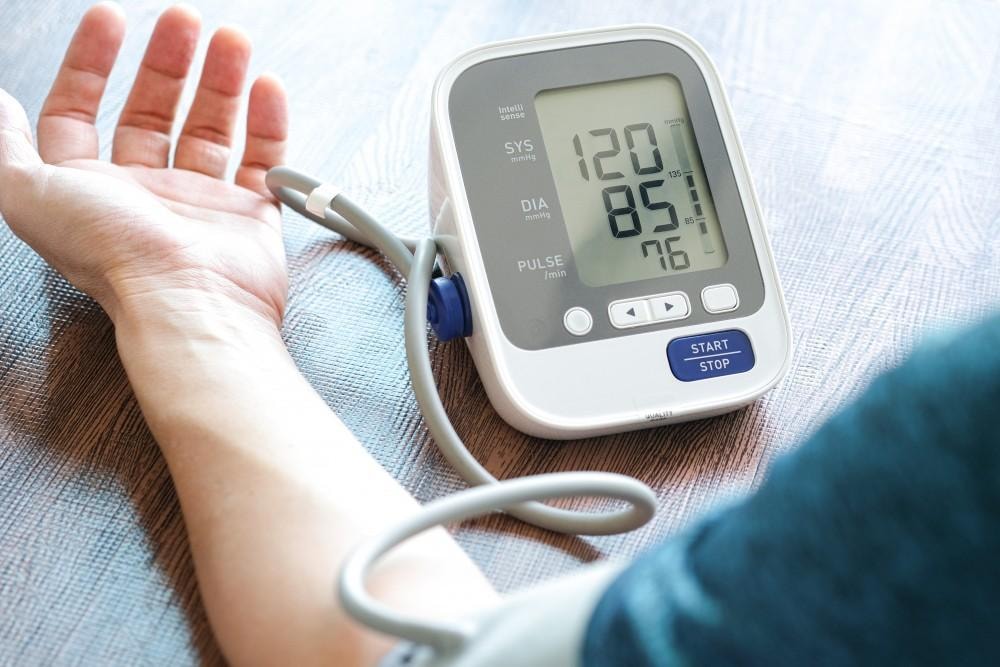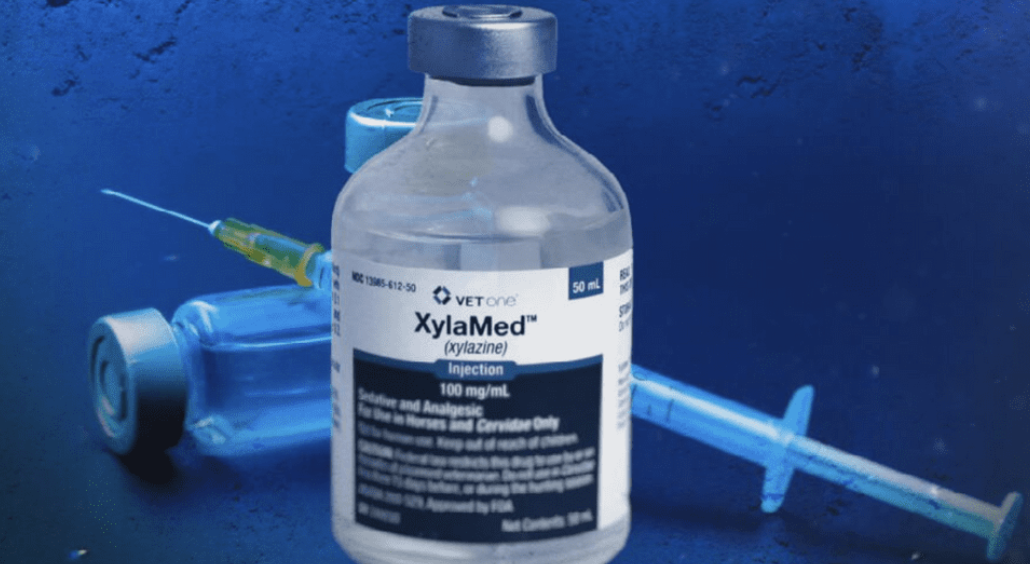How does Suboxone affect blood pressure? Suboxone can cause both high and low blood pressure based on individual circumstances and dosage, which is crucial for understanding how Suboxone affects blood pressure. This article explores these effects and the factors that influence them, providing essential insights for managing your treatment safely.
Key Takeaways
- Suboxone can cause fluctuations in blood pressure, leading to both increases during withdrawal symptoms and decreases due to side effects or adverse reactions.
- Monitoring blood pressure closely is essential for patients taking Suboxone, especially during initiation of treatment or dosage adjustments, to avoid complications.
- Consulting a healthcare provider is crucial if blood pressure issues persist, as it may indicate other underlying health concerns or necessitate adjustments in treatment.
Does Suboxone affect blood pressure?
Suboxone can affect blood pressure, causing both increases and decreases depending on individual physiology and dosage. This medication is not typically known to directly elevate blood pressure; instead, suboxone increases blood pressure are often related to withdrawal symptoms experienced by patients when they start treatment. During withdrawal, central nervous system changes can lead to a rapid heartbeat and constricted blood vessels, both of which may result in elevated blood pressure.
Conversely, Suboxone can sometimes cause low blood pressure as a side effect, especially in cases of adverse reactions such as allergic responses. The delivery method of buprenorphine in Suboxone, whether as a tablet or film, may influence how the body reacts and consequently affect blood pressure. Interactions with other central nervous system depressants can also lead to drops in blood pressure when taken alongside Suboxone lowering blood pressure.
Suboxone itself doesn’t typically cause high blood pressure directly. However, abrupt cessation of Suboxone can trigger high blood pressure in individuals with physical dependence on the medication. Patients should follow their prescribed dosage and consult their healthcare provider regularly to avoid such complications.

Can Suboxone cause low or high blood pressure?
Suboxone can cause both low and high blood pressure under different circumstances. Low blood pressure can occur as a side effect of Suboxone, especially if there is an adverse reaction or during central nervous system suppression. Patients on Suboxone may experience low blood pressure if combined with other central nervous system depressants, such as alcohol and certain medications. Symptoms of low blood pressure might include dizziness, fainting, and fatigue.
On the other hand, Suboxone is generally not known to directly raise blood pressure, but it can lead to spikes due to withdrawal symptoms when starting treatment. Patients dependent on Suboxone who stop the drug abruptly may experience increased blood pressure as a common effect of suboxone withdrawal. Rebound hypertension, characterized by a sudden rise in blood pressure, is a common risk during Suboxone withdrawal.
The method of administration for buprenorphine in Suboxone can influence blood pressure responses, with sublingual forms potentially causing less fluctuation. Patients should be aware of these potential effects and monitor their blood pressure closely, especially during the initial stages of treatment or when adjusting their Suboxone dosage.
How Suboxone works in the body
Suboxone is a combination drug of buprenorphine and naloxone, designed to alleviate cravings and withdrawal symptoms in individuals with opioid use disorder and opioid dependence suboxone. Buprenorphine acts as a partial agonist at opioid receptors, providing pain relief while reducing the potential for misuse. Naloxone, an opioid antagonist, is included to deter misuse by triggering withdrawal symptoms if the medication is improperly administered. Suboxone use is intended to support recovery from opioid use.
Suboxone’s effects on the central nervous system can influence cardiovascular responses such as vasodilation or stress regulation. The unique pharmacological profile of buprenorphine allows it to have a ceiling effect, minimizing risks associated with overdose compared to full opioid agonists. This combination aims to provide effective treatment for opioid dependence while minimizing the risk of abuse.
Buprenorphine’s pharmacological effect
Buprenorphine acts as a partial agonist at opioid receptors, providing enough stimulation to prevent withdrawal without inducing a significant high. Its high affinity for opioid receptors allows it to displace other opioids and reduce withdrawal symptoms for individuals with opioid dependency. This action results in a milder effect compared to full agonists, making it less likely to cause severe side effects or dependency. To navigate opioid withdrawal safely, individuals should consider how to treat dependence with opioid treatment using buprenorphine.
As a partial agonist, buprenorphine can induce low blood pressure as it slows central nervous system processes. This can lead to orthostatic hypotension or fainting in some patients. Long-term use of buprenorphine can suppress adrenal function, which may result in symptoms like dizziness or low blood pressure over time.
In some cases, allergic reactions to buprenorphine, such as skin rashes or facial swelling, can also result in a decrease in blood pressure. While buprenorphine itself is not usually associated with high blood pressure, withdrawal symptoms from opioids can cause spikes in blood pressure.
Naloxone’s influence on Suboxone
Naloxone is included in Suboxone to deter misuse:
- It becomes active only when the medication is improperly administered, triggering withdrawal symptoms.
- If the medication is injected, naloxone blocks opioid effects and can precipitate withdrawal.
- This effect helps reduce the potential for misuse, ensuring that patients do not experience a euphoric effect if they attempt to abuse the medication.
Naloxone functions as a pure antagonist at opioid receptors, counteracting the effects of other opioids when combined with buprenorphine in Suboxone. Its presence in Suboxone does not significantly affect the bioavailability of buprenorphine when taken sublingually. However, if naloxone is injected instead of taken sublingually, it can cause withdrawal symptoms due to its ability to displace opioids from receptor sites.
Patients often mistakenly attribute elevated blood pressure during withdrawal to Suboxone, when it may actually be a result of withdrawal effects. The presence of naloxone in Suboxone is not linked to causing high blood pressure; other factors like stress and withdrawal symptoms are more likely to affect blood pressure levels.
Research on Suboxone and blood pressure changes
Clinical research indicates that while Suboxone is not typically known to directly raise blood pressure, it can be associated with increased blood pressure due to withdrawal symptoms during initial dosing. A study found that abrupt cessation of Suboxone can lead to high blood pressure in patients with physical dependency, highlighting the need for medical supervision when adjusting dosages.
In some cases, Suboxone can lead to low blood pressure, particularly if there is an allergic reaction or inflammation associated with its use. Research has also shown that the method of administration for buprenorphine in Suboxone, whether as a tablet or film, can influence blood pressure responses in users.
Using Suboxone in conjunction with other central nervous system depressants, including drink alcohol, can enhance side effects and cause fluctuations in blood pressure. Patients on blood pressure medications may need to avoid buprenorphine or have their dosages adjusted due to potential interactions that can lead to low blood pressure.

Short-term vs. long-term blood pressure effects
The effects of Suboxone on blood pressure can vary over time. During the initial stages of treatment or during acute opioid withdrawal, patients may experience high blood pressure, commonly mistaken as a direct effect of Suboxone. Abrupt discontinuation of Suboxone can lead to high blood pressure in patients who have developed a dependency on the medication.
In the long term, the use of buprenorphine, the active ingredient in Suboxone, can suppress the hypothalamic-pituitary-adrenal axis, potentially leading to low blood pressure and dizziness. The method of delivery for Suboxone, whether in tablet or film form, can influence individual blood pressure responses.
An allergic reaction to buprenorphine can result in a serious allergic reaction and low blood pressure, which may accompany symptoms like rashes or swelling. Patients should monitor their blood pressure regularly and consult their healthcare provider to manage any adverse effects appropriately.
Who is at higher risk for Suboxone-induced blood pressure changes?
Certain individuals are at higher risk for experiencing blood pressure changes from Suboxone. Those in withdrawal from opioids are more prone to experiencing high blood pressure when taking Suboxone, as the stress on the body can cause this spike. Patients who abruptly stop taking Suboxone may also face increased blood pressure due to physical dependency on the medication.
People with pre-existing high blood pressure or those taking antihypertensive medications may experience adverse drug interactions when starting or increasing Suboxone. Certain central nervous system depressants, when combined with Suboxone, can exacerbate blood pressure fluctuations.
Individuals experiencing acute opioid withdrawal may see elevated blood pressure, which can be misattributed to starting Suboxone. Stressful life events and physiological changes can also contribute to spikes in blood pressure during Suboxone treatment. Patients with a history of hypertension should be monitored closely when using Suboxone, especially if they are experiencing opioid withdrawal symptoms. The clinical opiate withdrawal scale can be a useful tool in assessing these symptoms.
What to do if Suboxone affects your blood pressure
If Suboxone affects your blood pressure, there are several steps you can take to manage it effectively:
- Monitor your blood pressure regularly.
- Report any symptoms like dizziness, headaches, or lightheadedness to your healthcare provider.
- If high blood pressure persists beyond a few days of starting Suboxone, have a conversation with a doctor to explore other potential causes.
Do not adjust your Suboxone dosage without consulting your prescriber. Disclosing your full medical history and current medications is necessary to avoid harmful interactions when starting Suboxone. If blood pressure issues persist, it may be necessary to prescribe suboxone for ongoing treatment with alternative options for opioid use disorder.
In cases of withdrawal while on Suboxone, blood pressure may spike, necessitating medical supervision to manage the dosage safely. Always seek emergency care if you experience severe symptoms such as fainting, palpitations, or sustained high blood pressure, as these could indicate a more serious condition. Be aware of the suboxone withdrawal symptoms and the side effects of suboxone.
Managing blood pressure while on Suboxone
Managing blood pressure while on Suboxone involves making some lifestyle changes and following medical advice to lower blood pressure. Patients should:
- Avoid central nervous system depressants, such as alcohol, as they can exacerbate blood pressure issues.
- Stay hydrated.
- Maintain a balanced diet low in salt to help manage blood pressure levels.
Regular exercise and stress-reduction techniques like meditation or yoga can also be beneficial. When starting or adjusting buprenorphine dosage, patients may experience mental health-related dizziness alongside low blood pressure, so it’s important to move slowly when standing up to prevent fainting.
Monitoring is crucial, and patients should have regular check-ups with their healthcare provider to adjust dosages if necessary. Certain medications, including some used to treat hypertension, may negatively interact with Suboxone. Learn more about what medications you cannot take with suboxone to avoid dangerous combinations. Always consult your doctor before making any changes to your medication regimen.

Suboxone vs. other MAT drugs and blood pressure effects
When evaluating suboxone vs methadone, it's clear their cardiovascular impacts, including blood pressure changes, differ significantly. Suboxone is often seen as having a less direct impact on blood pressure compared to Methadone, which is associated with significant cardiovascular risks.
Methadone and Naltrexone each have unique profiles regarding cardiovascular side effects. Understanding these differences is crucial for patients and healthcare providers to make informed decisions about treatment options.
Methadone and cardiovascular risks
Methadone use has been associated with an increased risk of cardiovascular issues, including potential alterations in blood pressure. One of the most concerning side effects of Methadone is QT interval prolongation, which increases the risk of life-threatening arrhythmias such as torsades de pointes. Patients undergoing Methadone maintenance treatment often experience an increase in blood pressure, with approximately 36% developing hypertension.
Hypertension in Methadone patients is linked to higher body mass index, indicating that weight gain may contribute to elevated blood pressure during treatment. Long-term Methadone treatment is associated with changes in cardiovascular health, necessitating regular monitoring of blood pressure in patients.
No significant differences in sex or age were found between hypertensive and non-hypertensive patients in Methadone treatment, suggesting that other factors may influence blood pressure. Regular cardiovascular assessments are essential for Methadone patients to prevent serious health complications.
Naltrexone and blood pressure regulation
Naltrexone vs suboxone presents a key comparison for patients concerned with cardiovascular effects, as each influences blood pressure regulation differently. Some studies indicate that Naltrexone:
- It can stabilize blood pressure in certain patients by mitigating withdrawal symptoms and reducing cravings
- It is generally associated with fewer cardiovascular side effects compared to Methadone
- It is considered a safer option for patients with pre-existing heart conditions
However, Naltrexone has been found to increase plasma epinephrine concentrations, which could influence blood pressure responses. Research also suggests that opioid antagonists like Naltrexone may enhance sympathetic nervous system responses, which can affect blood pressure regulation. This can lead to variations in heart rate and blood pressure under stress.
Patients using Naltrexone are advised to monitor their blood pressure regularly, especially if they have a history of hypertension. The effects of Naltrexone on blood pressure may vary among individuals, potentially resulting in symptoms like headaches and dizziness.
Medical guidance and when to consult a doctor
Consult a healthcare provider if experiencing elevated blood pressure when starting Suboxone, as other medical factors may be at play. Doctors typically monitor patients’ blood pressure and overall health before and during Suboxone treatment. Monitoring blood pressure is recommended when beginning Suboxone, as stress and withdrawal symptoms can temporarily elevate blood pressure.
If high blood pressure persists beyond the initial days of starting Suboxone, further medical evaluation is necessary. Consult a healthcare provider if you experience persistent high blood pressure after starting Suboxone, as this may indicate other underlying health issues.
Seek immediate medical attention if you experience severe symptoms such as fainting, palpitations, or sustained high blood pressure, as these could indicate a more severe medical condition requiring urgent care. Regular consultations with a medical professional, MAT providers, and primary care physicians are crucial for managing blood pressure and overall health during Suboxone treatment, especially if you experience psychological symptoms and immediate physical symptoms.
Bottom Line: How does suboxone affect blood pressure?
Understanding how Suboxone affects blood pressure is crucial for anyone undergoing treatment for opioid dependence. Suboxone can cause both low and high blood pressure, depending on individual circumstances and the presence of withdrawal symptoms. Managing these effects involves regular monitoring, consulting healthcare providers, and making lifestyle adjustments to maintain a healthy blood pressure.
By staying informed and working closely with medical professionals, patients can navigate the complexities of Suboxone treatment more safely and effectively. Remember, the journey to recovery is challenging, but with the right support and knowledge, it is possible to overcome opioid addiction and lead a healthier, more stable life.
FAQs about how suboxone affects blood pressure
Can Suboxone cause dizziness due to low blood pressure?
Yes, Suboxone can cause dizziness due to low blood pressure, especially if there is an adverse reaction or during central nervous system suppression.
Should I take my blood pressure meds while on Suboxone?
Yes, but you should consult with your healthcare provider to avoid harmful interactions and adjust dosages if necessary.
What’s the safest way to manage high blood pressure with Suboxone?
To manage high blood pressure safely while using Suboxone, you should:
- Regularly monitor your blood pressure
- Report any symptoms to your healthcare provider
- Follow a healthy lifestyle, including a balanced diet and regular exercise.
Are blood pressure changes during acute withdrawal normal?
Yes, blood pressure changes during withdrawal syndrome are common and can include both increases and decreases depending on individual physiology and withdrawal severity.
What should I do if my blood pressure remains high after starting Suboxone?
Consult your healthcare provider to explore other potential causes and adjust your treatment plan if necessary.
















